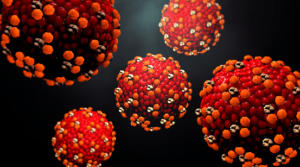The evolution of a diarrhoeal viral genome
Posted on September 19, 2012 by Post by Rebecca Gladstone, University of Southampton
Two billion cases of severe diarrhoea occur globally each year, representing the second leading cause of death in children under five years old, according to the World Health Organization. Diarrhoeal disease is both preventable and treatable. Devastating epidemics, outbreaks and sporadic cases of severe diarrhoea can be caused by the group B rotaviruses (RVBs). Using genomic sequencing, researchers have uncovered the evolutionary origins and diversity of human RVBs which will allow better diagnostic and disease prevention strategies to be developed.
The results were recently published in Journal of General Virology.

RVBs can infect humans and a range of other mammalian and avian species which impacts negatively on the economy through human morbidity and agricultural losses. Human-specific RVB strains infect and damage cells lining the gut, which results in severe cholera-like diarrhoea that requires rehydration therapy and potentially hospitalization. The virus is contracted from sewage-contaminated water and surfaces, often in resource-poor areas.
In the study, faecal samples were collected from both sporadic cases and recognised outbreaks between 1995 and 2010 from four cities in western India. DNA sequencing allowed the exact genomic sequence of 13 RVB human strains to be resolved, for comparison to each another and 7 previously published human RVB genome sequences. This allowed researchers to determine how genetically diverse the virus was over time, between regions and in outbreaks of varying severity.
The study revealed that the RVB viral genomes showed few differences across western India regardless of whether they were from isolated cases or outbreak scenarios, throughout the 15 year period. Additionally they were found to have high similarity to human strains previously sequenced from elsewhere in South-East Asia. Evolutionary analysis revealed that the western Indian strains recently evolved from a common ancestor during the 20th century. The data suggests that RVB is circulating as a group of closely related strains in the human population and the genome is not susceptible to a high rate of mutation. This is significant as the strain similarity will help the development of an effective vaccine against RVB. Vaccines are already available for group A rotaviruses.
A single outbreak of human RVB can affect over a million people, meaning early detection of an RVB outbreak is essential for effective epidemic control and prevention. The newly published genome data could allow better diagnostic tests to be designed that will increase detection in outbreak situations. The work may also contribute to effective RVB vaccine design in the future to prevent infections in both humans and livestock. Ultimately this will help reduce the number of deaths from diarrhoeal disease.
